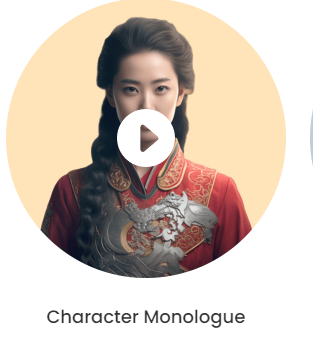Choosing the Right Tool for Dynamic Images
Due to the increasing influence of digital media, speech bubble photos are also considered as one of the most significant trend. It melts into our existing process, taking a fixed image and animating it to create a character that can speak, drastically improving ordinary photo conversation. There are so many talking photo apps,this choice is even more difficult! In this guide, you will see the main features and best practices behind choosing one over another!
Key Factors to Notice
Character animation and lip sync quality: The most important aspect of a talking photo app is its visualization capabilities. You really need precision lip-syncing to audio so good animation offers the best solution. Apps that have "smooch on sound" mouth movements aligning to the spoken words are typically 90–95% accurate.
User-Friendly: An intuitive user interface Uploading photos, selecting audio, and final creation process should be easy-going for both tech-literates or new users to get around the app quickly.
Voice effects and languages: A talking photo app capable of offering multiple voice effects and different languages so that the audio could be personalized as per the context in which photo has been clicked. There should be an almost endless number of options available with a variety of accents, languages and lighthearted voice modulations to choose from.
More Than Just Words: The best apps will also enable users to customize facial expressions and motions in addition to speaking. Examples of this might be tweaking the eye movements, facial expressions or even gesticulations to suit a particular tonality in the sound.
An integrated Animation Store: There is the ability to export and share animated photos for users that want to post their creations on social media or incorporate them into larger digital projects. Most of the good apps are well integrated with social sites like FB, Insta and Twitter.

Privacy & Security: Like any app that deals with sensitive data, security is critical. Check for a well-defined privacy policy with deep data protection to secure users' information.
Cost: While some Apps are free (even though they may include locks or only offer limited services) most cost!! If so, then which option does/does not cater your requirement in a better way and budget: Subscription OR One-Time Purchase. Price it out against what you get to see if the value for money score stacks up.
Performance and Reliability: The app should work well across a range of devices, without frequent crashes or bugs. Read user reviews to determine how well the app functions on various devices and operating systems.
Top Contenders on the Market
Among all its competitors, a few apps manage to shine with their features and user experience.
DupDub — for its quality production and a plethora of editing options.
MyHeritage Deep Nostalgia – For Anyone Familiar with the Times and Places at Risk
Wombo: Hugely famous for the jubilee sound and animation choices making it simple to share via web-based media
Making the Right Choice
Which best talking photo app is the best choice depends on how you plan to use it, whether for personal purposes when editing photos or around students your seeking to educate or promote.What It Means For Businesses Using Talking Photo AppsOn Müse yourselfTo cultivate a distinctive brand identity and stay ahead of competitors in 2019, start by automating communication — because time won't appeal to clients any longer. Take a look at what you want from your app and try out a few different ones. Through the app, ordinary images can become talking visuals which is an essential qualification in today's digital terrain.
